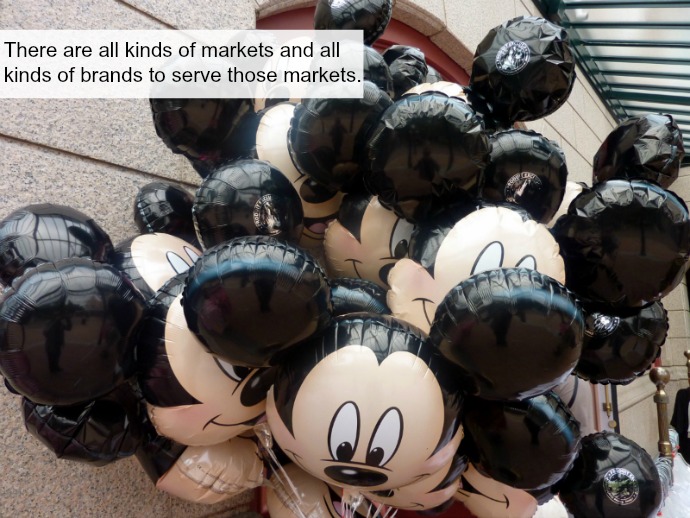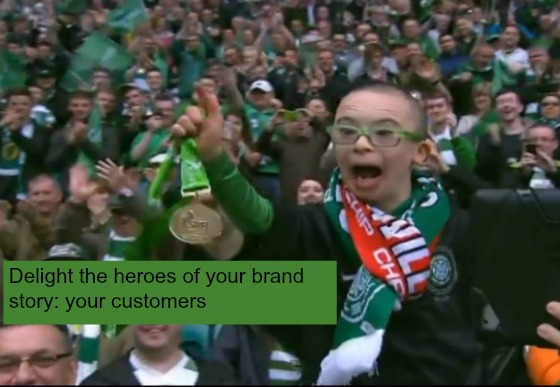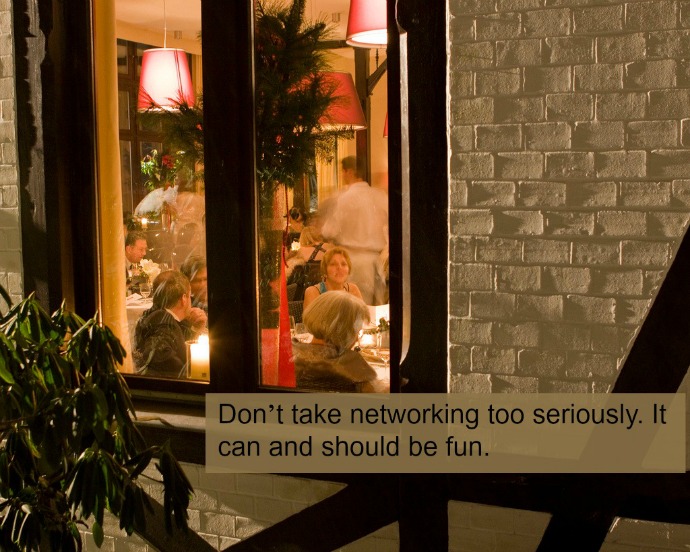A trip to Disneyland and my husband’s profound comment recently put me in my place. Here’s the tale:
In my own book, Branding Basics for Small Business (2nd Edition), there’s a passage titled: All Markets Have a Brand Need. In it, I seek to clarify that “brand” is not just about high-end “luxury brands” but about being clear and consistent in the audience you reach and the market need you fill. From page 49:
Sometimes people think brand means expensive, as in “brand name.” High cost and exquisite quality are indeed brand attributes, but you could choose to sell a generic T-shirt or dinnerware that’s cheap and disposable, since certain audience segments have a real need for those items. As long as you clearly convey this message in everything you do, you can become known as the place to buy inexpensive white T-shirts or the most stylish, cheap, disposable dinnerware. Doesn’t mean there’s anything wrong with that.
Having a strong brand doesn’t mean you have to charge the highest prices or offer the highest quality. It’s a nice side effect that often brand loyalty means customers are not buying based on price alone. But if your brand represents low prices (Wal-Mart) you can’t just all of the sudden start charging a boatload.
Brand is about setting expectations – and delivering on them. (Tweet this!)
Witness my recent trip to the Disneyland Resort to deliver a conference keynote. I texted a good friend that the Disney experience was so perplexing. High-touch customer service, calling you by name, a VIP Concierge at my beck and call (well, as the speaker, I guess!), and all staff (cast members) catering to your every whim. Such white-glove service – juxtaposed with people walking into a high-end steakhouse with flip-flops, mouse ears, and football jerseys.
And then I got snarky. As I’m prone to do.
“But such class and yet so much trashiness in one place is very confusing.”
OK, so I’m not proud of the “trashy’ comment. People are on vacation. Sometimes a vacation for which they’ve saved up for years. It was incredibly snobby even though I was just trying to be funny. (Sorry, I’m human)
When I tempered this remark to my husband later on the phone, explaining how perplexed I was by the contradicting Disney brand experience, this clever man said,
“That’s what Disney is all about, though: that everyone deserves special VIP treatment, especially when they are on vacation. Doesn’t matter who you are: Disney treats you like royalty. That is their brand.”
And it hit me like a ton of bricks. There was no duality in the Disney brand. It was perfectly consistent with that brand strategy, as my husband described it. There are markets for everything and Disney’s market is making everyday people feel like royalty. So you see a wide array of demographics when you visit. Because it’s not about incomes, or tastes, or whether you like the opera or NASCAR. It’s about serving people of all ages who want to experience magic. Who want to be treated like VIP’s. Who want to be awed, delighted and spoiled rotten for a brief period of time.
There are all kinds of markets. And there are indeed all kinds of brands to serve those markets. Disney is not confused. It knows exactly who it serves and why.
The question is: Do you know who you serve? And can those people quickly tell from everything you say, do and offer that you will serve them exactly what they want and need?
Heed the Mouse. He’s a pretty smart little guy, isn’t he? (And so is my husband)
Your turn: Can you describe your target audience’s main desire that you serve? Or do you feel like you sometimes serve multiple audiences and have challenges creating a consistent brand as a result? Fire away in the Comments below!
Image Credit: Sean MacEntee via Flickr





